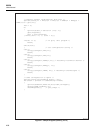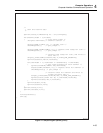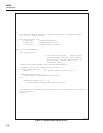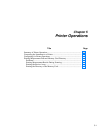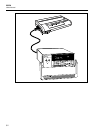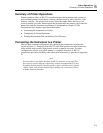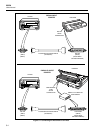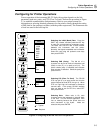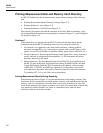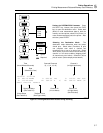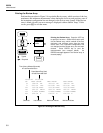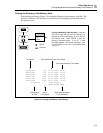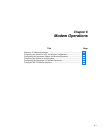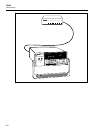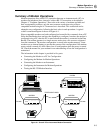
2635A
Users Manual
5-6
Printing Measurement Data and Memory Card Directory
An RS-232 link between the instrument and a printer allows printing of the following
data:
• Printing Measurement Results During Scanning (Figure 5-3)
• Printing the Review Array (Figure 5-4)
• Printing the Memory Card Directory(Figure 5-5)
The following procedures describe the operation of this link. Before continuing, verify
the instrument and the printer have been properly connected (Figure 5-1), and configured
for operation (Figure 5-2).
Problems?
If the printer does not operate after the RS-232 connection has been made and the
instrument and printer RS-232 parameters have been set, check the following:
1. No characters. No operation of any kind usually indicates a cabling problem,
hardware incompatibility (e.g., connecting to a printer with a parallel input), or the
printer is not on-line and ready for operation (ribbon, paper, power, interlocks, etc.).
2. Incorrect characters. Incorrect printer function (rapid paper feeds, wrong characters)
usually indicates a configuration incompatibility, i.e., the instrument and printer
baud rate and parity don’t match.
3. Missed characters. The Data Bucket Hydra Series II RS-232 port is different from
the RS-232 port on the Data Acquisition Hydra Series II (Model 2620A) and Data
Logger Hydra Series II (Model 2625A), because of the addition of three modem
control lines, CTS, RTS, and DSR (see Appendix D). If the printer occasionally
loses characters, the printer may need to control the data flow from the instrument.
Try enabling CTS "on" to see if this solves the problem.
Printing Measurement Results During Scanning
Perform the procedure in Figure 5-3 to print measurement results during scanning. The
destination for the scanned data can be the printer, memory card, both the printer and the
memory card, or no destination, where the data is saved only in the Review array. The
mode for the printing to the printer or memory card can be all scanned data, scanned data
only when any scanned channel is in alarm, or scanned data only when an alarm
transitions from one alrm stat to another.



